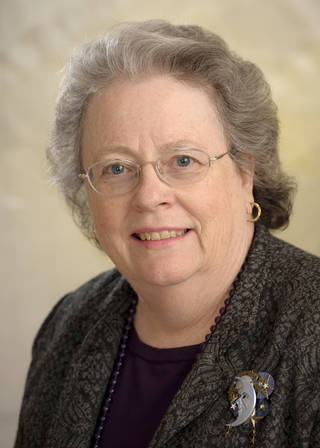Astrobiology Is Alive and Well
Lord MartinRees, Astronomer Royal, opened AbSciCon 2008, the fifth bi-annual astrobiologyscience conference. His thoughtful view on life in the cosmic context set thetone for the vigorous and intellectually diverse meeting.
Theinternational astrobiology community gathered together at AbSciCon 2008 to present new discoveries, tobuild collaborations, and to celebrate a decade of cross-disciplinary science.AbSciCon 2008 was hosted by the SETI Institute, and it attracted more than 675scientists, students, educators, and journalists from 28 countries. Thoughdominated by attendees from the US, all the continents were represented,including Antarctica,where several researchers have conducted science programs. Astrobiology is athriving international endeavor. Working across boundaries of traditionaldisciplines leads to new discoveries, as was evident in the oral and posterpresentations at the meeting.
AbSciCon2008 was organized by more than 100 scientists working together to developmajor, plenary sessions, and chair 39 topical sessions. Drs. Ariel Anbar (Arizona State University) led the science steering committee with vice-chairs Drs. Tori Hoehler(NASA Ames Research Center) and Pascale Ehrenfreund (Leiden University). Many other scientists and educators organized individual sessions. I led a team atthe SETI Institute to manage the local organization of the meeting. The AstrobiologyJournal published the abstractswhich are viewable online.
AbSciCon 2008focused on three major themes:
- the astrophysical and planetary context for life
- the origin and evolution of life
- the search for life
Six plenarysessions plus focus groups and evening panels brought everyone together. Then,parallel topicalsessions focused on particular research and education efforts from life inextreme environments here on Earth, to astrobiology and the exploration of thesolar system and beyond. How do we protect Earth from contamination duringsample return missions, and, likewise, how do we protect Mars from forwardcontamination with missions that land on its surface? What is a habitableplanet? Who has discovered the earliest fossils on Earth? (The answer to thatone continues to change with new field work.) What about the methane signaturein Mars' atmosphere: geological or biological in origin? How can laboratoryresearch inform us about the origin of life? How did life begin? Can werecognize alien life? And, of course, SETI: new tools, strategies, andexperiments.
OnWednesday evening, the public was invited to an "Alien Worlds Safari"where a panel of leading scientists discussed the possibilities of lifeelsewhere on April 16.Drs. Jill Tarter, Tori Hoehler, Peter Ward, and T. C.Onstott discussed and answered questions about possible alien worlds: slimeworlds to high-tech worlds. How can we find them, and can we recognize life on alienworlds?
Incollaboration with AbSciCon and SETI Institute, San Jose State University hosted Dr. Antonio Lazcano, from UNAM, to present "Origien de la Vida" and"Origin of Life" on Thursday and Friday. At the main conference,Lazcano also presented a marvelous lecture as a tribute to Stanley Miller(Miller-Urey experiment) in a session on The Molecules of Life. In the samesession, Dr. Gerald Joyce presented a lecture in memory of Leslie Orgel. BothMiller and Orgel were leading scientists in origin of life studies.
Get the Space.com Newsletter
Breaking space news, the latest updates on rocket launches, skywatching events and more!
Isastrobiology healthy? A year ago, when the SETI Institute decided to hostAbSciCon 2008, we were concerned that the meeting would attract only 200-300people. Funding for astrobiology had been cut inhalf by the former Associate Administrator of NASA's Science MissionDirectorate, Dr. Mary Cleave. I'm happy to report that we were overlypessimistic. Based on the participation in AbSciCon 2008, the astrobiologycommunity is alive and well. I believe it has a vibrant future. Astrobiologyattracts bright, young people to science: one-third of the attendees were recentpost-docs plus undergraduate and graduate students. In the US, there's an ongoing discussion and much political hand-wringing about how to attractyoung people to STEM (science, technology, engineering and mathematics)careers. It's evident to me that astrobiology is an enticing STEM pathway forstudents. I believe that astrobiology is growing, and has an exciting andinspiring future.
See you atthe next AbSciCon meeting in 2010.
- SPACE.com TV: Reflections on Fermi's Paradox
- VIDEO: Figure the Odds of E.T.!
- All About SETI
Join our Space Forums to keep talking space on the latest missions, night sky and more! And if you have a news tip, correction or comment, let us know at: community@space.com.

Edna DeVore is a science and astronomy educator and the former Director of Education and Public Outreach for the SETI Institute. She earned an undergraduate degree from the University of Pacific followed by a master's degree in instructional technology from San Jose State and a master's in astronomy from the University of Arizona. In 1992, Edna joined the SETI Institute, where she wrote features on space exploration, astrobiology and more, some of which appeared on Space.com. She was among the first principal investigators to propose projects to NASA's Office of Space Science and receive funding for educational programs. Edna went on to work on education and public outreach for NASA's Kepler space telescope and SOFIA flying telescope missions. Edna received numerous awards during her tenure at SETI, including NASA Honor Awards for her work on Kepler and SOFIA, and Aerospace Awareness Award for Women in Aerospace in 2005. Edna retired in 2013.









